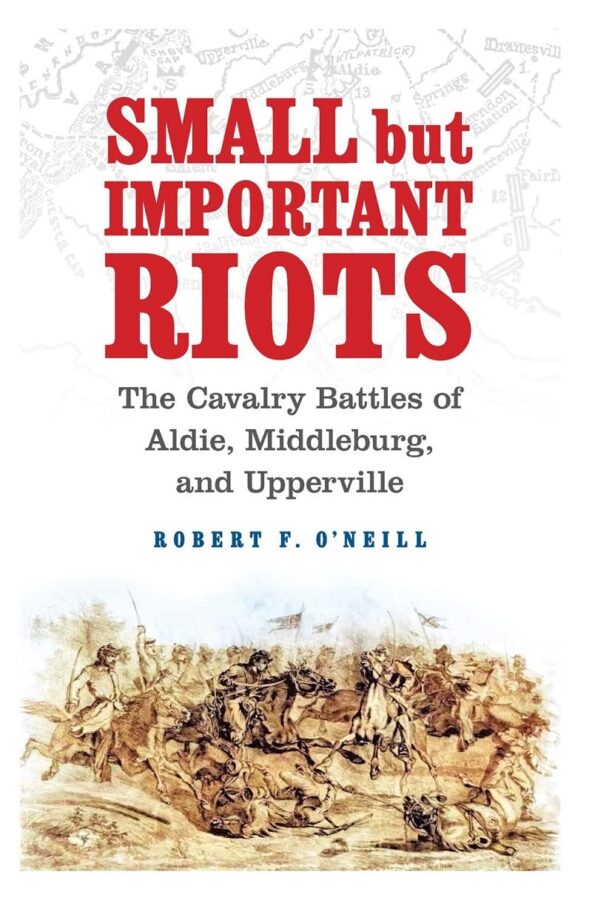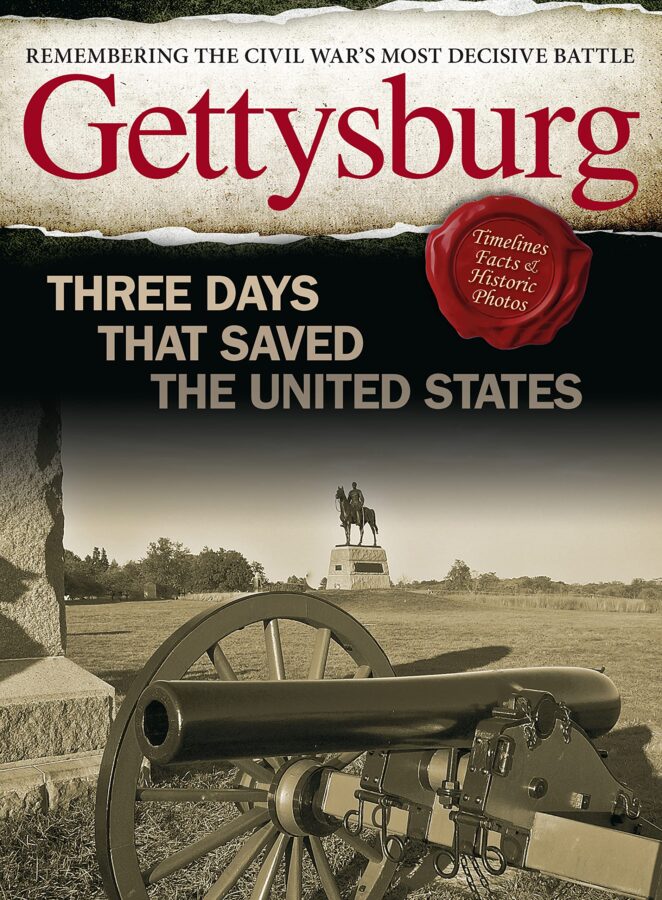Small But Important Riots: The Cavalry Battles of Aldie, Middleburg, and Upperville by Robert F. O’Neill. Potomac Books, 2023. Cloth, ISBN: 978-1-64012-547-6. $36.95.
 By the author’s own admission, Small but Important Riots has been a lifetime commitment. “Nearly thirty years of continuing research into the events that transpired in and around the Loudoun Valley in the critical days between June 10 and June 27,” Robert O’Neill writes, “have convinced me to reconsider the judgments and conclusions I reached years ago.” The best historians know that they are engaged in an art of constant reinterpretation that enables them to shine new light on previously established conclusions. By continuing to mine repositories for information—including diaries, letters, memoirs, military records, and pension applications—O’Neill has brought his unexcelled knowledge of the pertinent geography and personalities to these still under appreciated events.
By the author’s own admission, Small but Important Riots has been a lifetime commitment. “Nearly thirty years of continuing research into the events that transpired in and around the Loudoun Valley in the critical days between June 10 and June 27,” Robert O’Neill writes, “have convinced me to reconsider the judgments and conclusions I reached years ago.” The best historians know that they are engaged in an art of constant reinterpretation that enables them to shine new light on previously established conclusions. By continuing to mine repositories for information—including diaries, letters, memoirs, military records, and pension applications—O’Neill has brought his unexcelled knowledge of the pertinent geography and personalities to these still under appreciated events.
The story can begin at a number of places: when Major General Joseph Hooker took a collection of cavalry brigades and reorganized them into the Union cavalry corps in February 1863; when Brigadier General Alfred Pleasonton was appointed the head of the Union cavalry corps after the Battle of Chancellorsville in May 1863; or after the the Battle of Brandy Station on June 9, 1863, where the blue horsemen under Pleasonton fought famed rebel cavalry commander J.E.B. Stuart’s gray riders to at least a draw in the largest cavalry battle of the Civil War. O’Neill has chosen to concentrate on the days after Brandy Station and writes a tactical study of the fighting from June 17-22 in the Loudoun Valley. He places these events within the context of the Gettysburg campaign. The question for potential readers is whether they find the strategic storyline amid the multitude of tactical names and facts O’Neill presents.
With the Army of the Potomac still reeling from its defeat at the battle of Chancellorsville, Robert E. Lee planned to take the Army of Northern Virginia on its second invasion of the North. While Lee consolidated his forces in the Shenandoah Valley, Stuart’s troopers plugged the mountain gaps to keep prying Union eyes away. Meanwhile, Hooker and the Lincoln administration, fearing a rebel strike against Washington, kept Pleasonton’s bluecoats on a tight leash and ordered them to stay close and protect the main army. Nevertheless, verbal orders to Pleasonton counseled him to probe for the enemy but not give battle without explicit instructions. O’Neill demonstrates how Pleasonton and his subordinates repeatedly pushed the envelope. The stage was set for “small but important riots.”
The fighting that took place at Aldie, Middleburg, and Upperville turned the Loudoun Valley into a roiling cauldron of small unit actions in which decisions were often made by junior officers in the field—and carried out by saddle-sore troopers and worn-out mounts. With plentiful quotes, O’Neill brings to life how these men experienced these intense actions. Fighting with sabers, revolvers, and carbines, sometimes mounted but often on foot, blue and gray horsemen engaged in close order fighting akin to back alley rock fights. When the days were hot, the roads became ribbons of choking dust; when it rained, the rutted farm lanes became quagmires and the fields swamps. Glory would be hard won, but both sides went at each other with a will. O’Neill’s spirited narrative does justice to the men and events he chronicles.
“The gap in Bull Run Mountain, together with the convergence of the turnpikes and the Carolina Road,” writes O’Neill, “made the town of Aldie militarily significant.” Stuart realized “that by seizing both Aldie Gap and Thoroughfare Gap to the south, he could, with a small force, deny the enemy access to both the Loudoun Valley and the Shenandoah Valley,” all the while giving him miles of defensible ground as he screened Lee’s infantry. O’Neill supplies a detailed order of battle for what he colorfully calls the fight at the haystacks—and for the subsequent engagements along the Snickersville Pike, including the disastrous reconnaissance toward Middleburg by Colonel Alfred Duffie’s First Rhode Island Cavalry. All told, Union casualties at Aldie numbered 310; Confederate losses totaled 137. Duffie’s scout toward Middleburg cost the Union 229 casualties that included more than 200 men and horses captured; the Confederates lost only 24 men.
The June 19 fight around Middleburg and Millville was the smallest of the Loudoun “riots.” Each side lost about 98 men. The Upperville engagement on June 21 was the largest. It involved a four regiment Union infantry brigade and two full cavalry divisions led by Brigadier Generals John Buford and David Gregg, nineteen regiments in all. The Confederates, led by Major General J.E.B. Stuart opposed them with four cavalry brigades and a horse artillery battalion. Casualties for all the Loudoun “riots” totaled 831 for the Union, 566 for the Confederacy.
But the fighting took a toll on more than just the men. O’Neill includes a fascinating appendix about the care and use of horses. “During the critical six days in the Loudoun Valley,” O’Neill writes, “the horses may never have been unsaddled or received any of the daily care they received in camp.” Like the troopers they carried, the horses fought during the day and served on picket duty at night. Forage was inconsistent and the grass of little nutritional value. “Coated in dust, mud, and sweat,” O’Neill laments, “they may not have been groomed for the entire six days.” When it was all over, a Union cavalryman speculated, “I think we’ll be going to Pennsylvania.”
Gordon Berg has published many articles and reviews in Civil War periodicals. He writes from Gaithersburg, Maryland.
